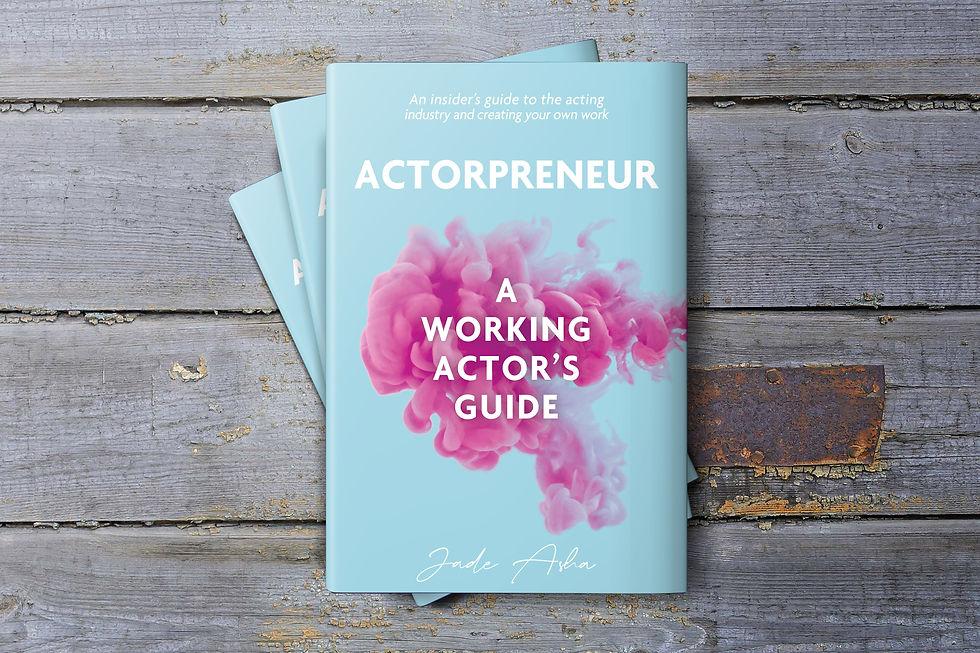HOW TO CREATE A GREAT PODCAST IN 10 STEPS
- Jade Asha

- Apr 13, 2020
- 4 min read
Updated: Nov 23, 2020

1) Come up with a concept. It’s got to be something that you love and are interested in. Although podcasts are a very fast form of media in terms of turn around time, if you want to succeed you have to be in it for the long run. It can be as specific as you like, there’s an audience for everything, some obviously broader than others but the more specific, the less competition you will have. Consider relating it to your business. It will help to grown your reputation, brand and hopefully one day bring you clients and revenue.
2) Name your podcast. Spend a bit of time brain storming thing. Make sure its catchy, memorable and relates to your podcast. Most importantly check that no one else has used that name. Do this by searching your name in iTunes and checking all of the social media (instagram, twitter, youtube and facebook) platforms don’t have any users with your name either.
3) Plan out your episodes for your first series. I usually plan and record 10 episodes before publishing any episodes online. This means your gonna be in it for the long run, rather than letting it drop after a couple of episodes. Consistency is key! How long will they be? 10, 25, 60 minutes? It’s up to you. Just make sure you have enough interesting content. Are you going to have guests? Who are they going to be? I personally think 20-25 minutes is a great length and start each episode with a question which we will discuss throughout the show. Don’t be too ridged though, your not an audiobook. Feel free to go with the flow and let the conversation take you somewhere else, just be in control enough to bring yourselves back to the point every so often.
4) Get a recording set up. Yes you could hire a studio, but really you want recording to be accessible as possible and in the long run it would be cheaper to buy your own equipment. Personally I use a NT2A Rode mic and Scarlett 2i2 interface which cost around £450 but I know you get purchase USB mics for around £100. Podcasts don’t have to be perfect, as long as you have a quiet, peaceful uninterrupted space throughout your recording, you will be good to go.
5) Get a theme tune. Once you have figured out your branding, its usually a nice and professional touch to have some intro and outro music at the beginning and the end of your podcast. It’s unlikely that you will be able to use a mainstream song as they would be extremely expensive to get the right for. Have a search on the internet for music for podcasts. Please note that you must own the rights for any audio that you add on to your podcast. There will be around a £50 usage fee, depending on the artist but should be a one off payment.
6) Create artwork for your podcast. This is like your album cover and will be the main thing people see when looking for a new podcast. Keep it clean, professional and eye catching. There are some brilliant designers on Fiverr.com who will design something for you for a very low cost. Remember to stay on brand. Make sure the colours and even the font clearly shows what you are about. However it doesn’t have to be perfect just yet. Unlike your recording and theme tune, it is very easy to update your artwork on your socials and podcasting platform.
7) Edit it together! Editing a podcast together is pretty simple, it’s a lot of drag and dropping. The same with adding the intro and outro music. I personally like to play with the volumes a little and cut out a few inevitable awkward pauses. In my podcast NO DRAMA, there is three of us on one mic so every so often it needs a little tweak here and there. I edit my podcasts on a Mac using adobe audition which I pay about £20 for monthly but you could use a free program on garage band or a PC equivalent. If editing is not where your skills lay then Fiverr has some great and affordable editors, although over time this could become a little costly.
8) Choose a podcasting platform. There are many great ones out there, I personally use Buzzsprout as it’s super user friendly. It also has lots of great promoting options and helps you get your podcasts on iTunes, Spotify and Stitcher with ease. Now all you need to do is upload your edited podcast, artwork, fill in all of your info and hit the Publish button (exciting!)

9) Congratulations you have a live podcast!! Now you have to make sure the world can find you. Create a profile for each social media platform (instagram, twitter, youtube and facebook) using the same username- we use NO DRAMA PODCAST. Invite your friends and share exciting posts, enticing listeners to your podcast. If you are super on it, then you can do this step BEFORE publishing. The more you can build up the hype and create a following, the more listens your podcast will get, meaning you could be promoted by streamer- essentially free advertising!
10) Plan out season two! By now you should know what your brand is all about. Start now thinking about monetising your podcast. Ask you’re listeners what they do and don’t like. Engage, learn from your mistakes and grow. The possibilities are endless and so is your audience.
If you liked this blog then please give me a thumbs up and share. You can check out Jade’s podcast NO DRAMA here https://www.jadeashavoiceovers.com/podcast

Jades book ACTORPRENEUR- A Working Actors Guide is now available in paperback and ebook at Amazon, Etsy and Waterstones







Comments